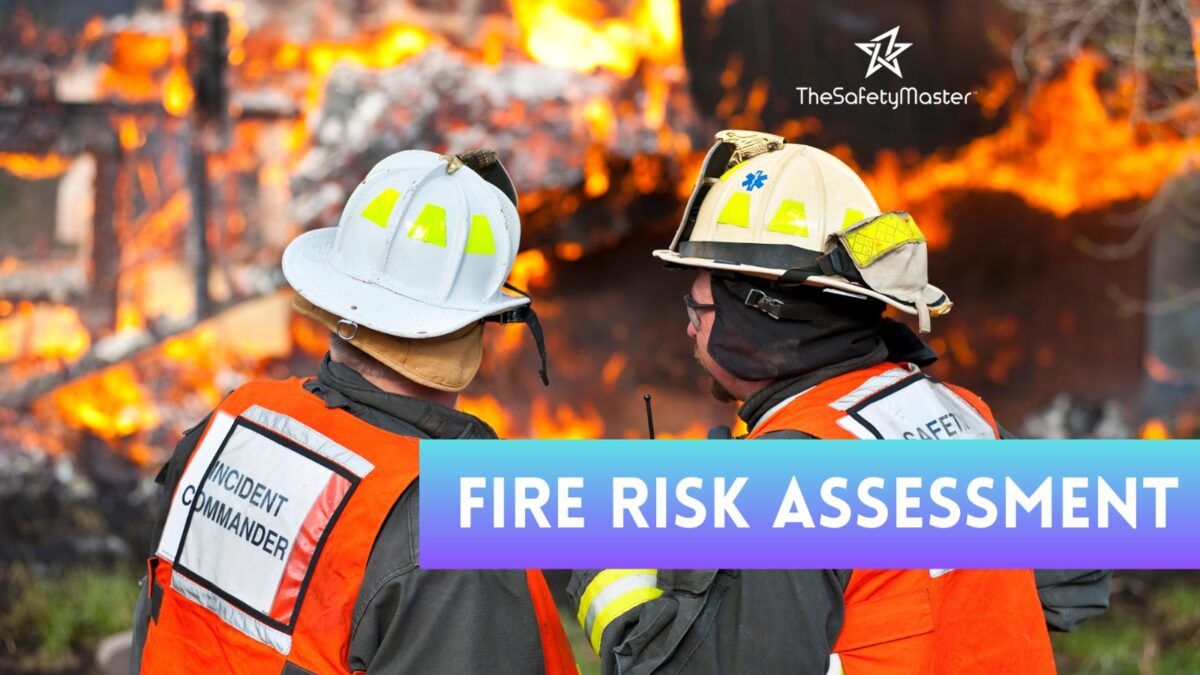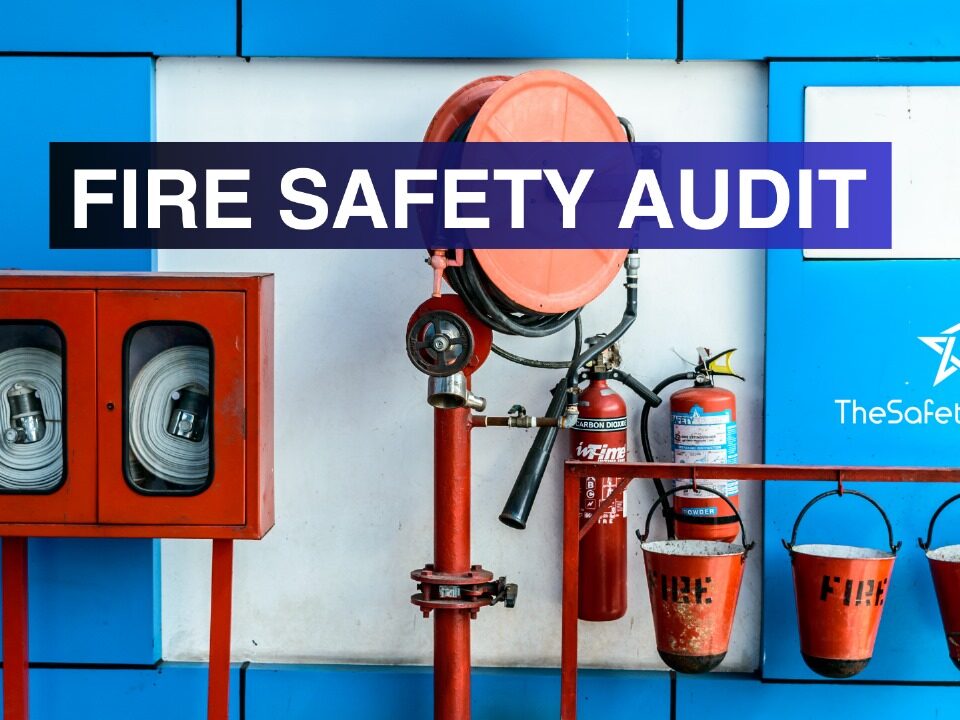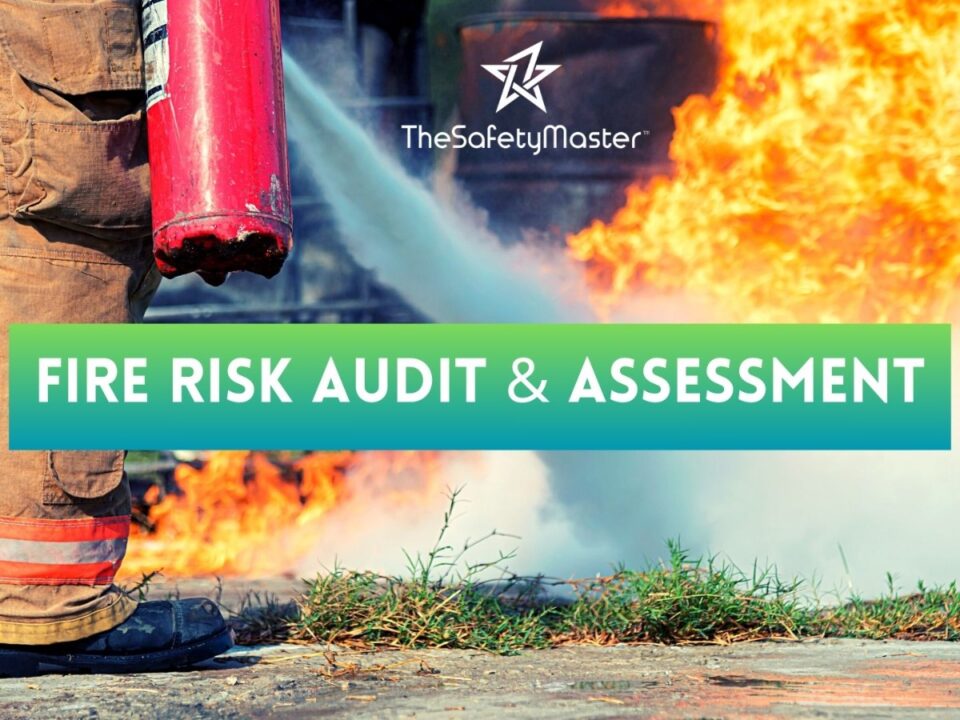Comprehensive Fire Safety Audit Checklist and Report

Fire Pump Performance Testing Services: Ensuring Reliability with The Safety Master
July 30, 2024
Effective Waste & Garbage Management Systems Guide
August 14, 2024Introduction:
A fire safety audit is a systematic evaluation of a facility’s fire safety measures, ensuring compliance with regulations and identifying potential hazards. It is crucial for protecting lives, property, and maintaining operational continuity. Conducting a fire safety audit helps organizations uncover vulnerabilities and implement corrective actions, reducing the risk of fire-related incidents. Regular fire safety audits are not only a legal requirement but also a best practice for fostering a safe environment for employees and occupants.
1. What is a Fire Safety Audit?
A fire safety audit involves a thorough examination of a building’s fire prevention and protection measures. This includes evaluating fire detection systems, alarms, sprinklers, and emergency exits. The primary goal of a fire safety audit is to ensure that all fire safety protocols are in place and functioning correctly. By conducting a fire audit, organizations can identify deficiencies and take proactive steps to address them. Regular fire safety audits help in maintaining compliance with fire safety regulations and standards.
2. Why Do You Need a Fire Safety Audit?
Conducting a fire safety audit is essential for several reasons. Firstly, it helps in complying with legal requirements and avoiding penalties. A fire audit ensures that the facility meets all fire safety regulations, providing a safe environment for employees and visitors. Secondly, a fire safety audit identifies potential fire hazards, allowing for timely intervention and risk mitigation. The findings from a fire audit report help in enhancing the overall safety culture within the organization. Regular fire safety audits contribute to reducing the likelihood of fire incidents and minimizing damage.
3. How to Prepare for a Fire Safety Audit?
Preparation is key to a successful fire safety audit. Start by gathering all relevant documents, such as fire safety plans, maintenance records, and previous fire audit reports. Ensure that fire detection and suppression systems are in good working condition. Conduct a self-assessment using a fire and safety audit checklist to identify and address obvious issues. Training employees on fire safety protocols and emergency procedures is also crucial. Being well-prepared for a fire safety audit demonstrates the organization’s commitment to maintaining a safe environment.
4. What Does a Fire Safety Audit Checklist Include?
A comprehensive fire safety audit checklist includes several key elements. These typically cover fire detection and alarm systems, emergency lighting, fire extinguishers, sprinkler systems, and evacuation procedures. The fire audit checklist also evaluates the maintenance and testing of fire safety equipment, ensuring they are up to date. It includes inspecting fire doors, escape routes, and the availability of clear signage. Using a detailed fire and safety audit checklist ensures that all critical areas are reviewed and compliance is maintained.
5. What Should Be Included in a Fire Audit Report?
A fire audit report is the culmination of the fire safety audit process, detailing findings and recommendations. It includes an executive summary, highlighting key issues and corrective actions. The fire audit report provides a comprehensive analysis of fire safety measures, identifying areas of non-compliance and potential hazards. It should also include an action plan with timelines for addressing identified issues. The fire audit report serves as a valuable tool for management to prioritize fire safety improvements and track progress over time.
6. How to Conduct a Fire and Safety Audit Checklist?
Conducting a fire and safety audit checklist involves a systematic approach to evaluating fire safety measures. Start by reviewing the fire safety audit checklist and ensuring all necessary components are included. Inspect fire detection and alarm systems, checking for functionality and proper maintenance. Evaluate emergency exits, ensuring they are accessible and well-marked. Use the fire audit checklist to assess the condition of fire extinguishers and sprinkler systems. Document findings and note any deficiencies that need attention. A thorough fire and safety audit checklist helps in identifying areas for improvement and ensuring compliance.
7. What Are the Key Elements of a Fire Safety Audit Checklist?
The fire safety audit checklist comprises several essential elements. These include fire detection systems, alarms, and emergency lighting. The fire audit checklist also covers the inspection of fire extinguishers, ensuring they are readily available and properly maintained. Evaluating fire doors and escape routes is another critical aspect. The fire and safety audit checklist should include checking the functionality of sprinkler systems and ensuring clear signage for emergency exits. By covering these key elements, the fire safety audit checklist helps in maintaining a safe environment.
8. How to Create an Effective Fire Safety Audit Checklist?
Creating an effective fire safety audit checklist involves understanding the specific needs of your facility. Start by reviewing existing fire safety regulations and standards. Include all critical components such as fire detection, alarms, emergency lighting, and evacuation procedures. Customize the fire audit checklist to address unique risks associated with your operations. Ensure the fire and safety audit checklist is comprehensive, covering maintenance and testing of all fire safety equipment. Regularly update the fire safety audit checklist to incorporate new regulations and best practices.
9. What Are Common Findings in a Fire Safety Audit?
Common findings in a fire safety audit often include non-functional fire alarms, blocked emergency exits, and outdated fire extinguishers. The fire audit may also reveal issues with sprinkler systems, such as inadequate coverage or lack of maintenance. Another frequent finding is the absence of clear signage for evacuation routes. The fire audit report typically highlights these deficiencies and provides recommendations for corrective actions. Addressing these common issues promptly can significantly enhance the overall fire safety of the facility.
10. How to Address and Correct Fire Audit Findings?
Addressing findings from a fire safety audit involves implementing the recommendations outlined in the fire audit report. Prioritize actions based on the severity of the identified issues. For example, ensure that non-functional fire alarms and blocked exits are addressed immediately. Update and maintain fire extinguishers and sprinkler systems regularly. Use the fire and safety audit checklist to re-evaluate the corrections and ensure compliance. By systematically addressing the findings, organizations can improve their fire safety measures and reduce risks.
11. How Often Should a Fire Safety Audit be Conducted?
The frequency of a fire safety audit depends on several factors, including the type of facility, its occupancy, and regulatory requirements. Generally, it is recommended to conduct a fire audit annually. High-risk environments, such as industrial facilities, may require more frequent audits. Regular fire safety audits ensure that all fire safety measures are up to date and functioning correctly. They also help in identifying new hazards and maintaining compliance with evolving fire safety regulations. Consistent audits contribute to a safer environment and proactive risk management.
12. What are the Latest Trends in Fire Safety Audits?
The field of fire safety audits is continually evolving with advancements in technology and best practices. One of the latest trends is the use of digital tools for conducting fire audits. These tools streamline the process, allowing for real-time data collection and analysis. Another trend is the integration of smart fire detection systems that provide enhanced monitoring and early warning capabilities. The use of drones for inspecting hard-to-reach areas is also gaining popularity. Staying updated with these trends helps in conducting more efficient and effective fire safety audits.
13. How Can Fire Safety Audit Training Benefit Your Team?
Fire safety audit training equips your team with the knowledge and skills to conduct thorough audits. It helps them understand the importance of each component in the fire and safety audit checklist and how to evaluate them effectively. Training also covers the latest regulations and best practices, ensuring compliance and enhancing the safety culture within the organization. By investing in fire safety audit training, you empower your team to identify and address potential hazards proactively, contributing to a safer workplace.
14. What Role Does Process Safety Management Play in Fire Safety Audits?
Process Safety Management (PSM) plays a crucial role in fire safety audits, particularly in industries dealing with hazardous materials. PSM involves systematically identifying and controlling risks associated with industrial processes. Integrating PSM into fire safety audits ensures a comprehensive evaluation of fire hazards related to chemical processes and equipment. This approach enhances the effectiveness of the fire audit by addressing both fire safety and process safety concerns. By incorporating PSM, organizations can achieve a higher level of safety and regulatory compliance.
Conclusion:
- Summarizing the importance of regular fire safety audits
Regular fire safety audits are essential for maintaining a safe environment and ensuring compliance with fire safety regulations. They help in identifying potential hazards and implementing corrective actions to prevent fire incidents. By conducting thorough fire audits and using detailed fire and safety audit checklists, organizations can enhance their fire safety measures and protect lives and property.
- Encouraging proactive fire safety measures
Proactive fire safety measures, including regular fire safety audits, are crucial for mitigating risks and maintaining a safe workplace. Encourage your team to stay informed about fire safety protocols and participate in fire safety audit training programs. By fostering a culture of safety and vigilance, you can ensure a safer environment for everyone.



